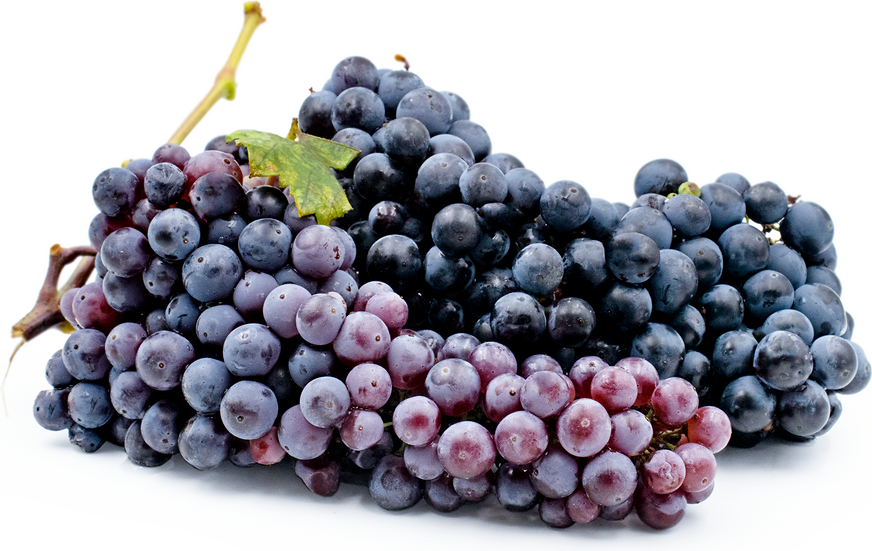


Zinfandel Grapes
Estimated Inventory, lb : 0
Description/Taste
Zinfandel grapes are medium to large in size and are round to oval in shape, growing in large, tightly packed bunches. The thick skin ranges from deep red to purple-black, and the translucent flesh is extremely juicy and contains a few seeds. Zinfandel grapes have a high sugar content, are acidic, and have an intense, sweet fruity flavor with hints of spice, blackberry, and plum. The flavor of Zinfandel wine depends on climate as grapes grown in warmer areas produce wines with anise, blackberry, and pepper notes while grapes grown in cooler regions have much fruitier, berry flavors.
Seasons/Availability
Zinfandel grapes are available in the fall.
Current Facts
Zinfandel grapes, botanically classified as Vitis vinifera, are a black skinned grape that is primarily used for winemaking. Also known as Primitivo grapes in Italian and Crljenak Kastelanski in Croatian, Zinfandel grapes can be used to produce both robust red wines and semi-sweet, light pink vintages. Zinfandel grapes were made popular from the California wine industry and are often known as a Californian wine even though they are not indigenous to the United States. Over ten percent of all Californian vineyards plant the variety, and there are some Zinfandel vines in California that are over fifty years old. Zinfandel grapes are unique from other wine grapes as each grape may ripen at different times on the vine and it is common to see lighter, less mature grapes growing next to ripe ones next to even older, “raisin” grapes.
Nutritional Value
Zinfandel grapes are rich in vitamins A, C, and K and have a high fluid content, which can help with hydration and electrolyte replacement.
Applications
Zinfandel grapes are predominately known as a wine grape, but they can also be eaten fresh, out-of-hand as a table grape. The grape's sweet flavor can complement pairings on cheese boards and fruit platters, can be pressed into juice, or sliced and served in green salads. They can also be used as a garnish atop desserts like cakes, tarts, sorbets, and ice creams, and can be cooked and reduced into jellies and jams. Zinfandel grapes and wine pair well with tomato-based dishes such as pasta or pizza, hamburgers, barbequed meats, venison, and roast chicken. They will keep up to five days when stored in the refrigerator.
Ethnic/Cultural Info
Zinfandel grapes have been called a California grape because they are mostly grown in the state and gained their notoriety because of the mass production, but the grape’s origins actually date back to Croatia. Dr. Carole Meredith of University of California at Davis discovered that Zinfandel grapes are the same grape as the Primitivo in Italy and Crljenak Kastelanski in Croatia and DNA fingerprinting has traced its origins to Croatia. Though the grapes are the same, many argue that the wines are different because of the terroir, climate, and cultivation methods. In December 2007, in an effort to distinguish the wines, the United States ruled that producers must label their wine either Zinfandel or Primitivo, depending on the grape and the region it was grown in.
Geography/History
The exact origins of Zinfandel grapes are unknown, but it is theorized that they are native to Croatia from a variety of grape known as Crljenak Kaštelanski. Today Zinfandel grapes are mostly cultivated in the United States, where they were first recorded in the early 1800s and were introduced to California during the gold rush between 1852-1857. Zinfandel grapes can be found at specialty markets and cultivated in the United States, Mexico, Chile, Brazil, Italy, Croatia, South Africa, and Australia.

Recipe Ideas
Recipes that include Zinfandel Grapes. One
| Wine Muse |
|
The Wine Lover's Grape Jelly |
| The Bojon Gourmet |
|
Zinfandel Grape, Rosemary & Gin Crush |



